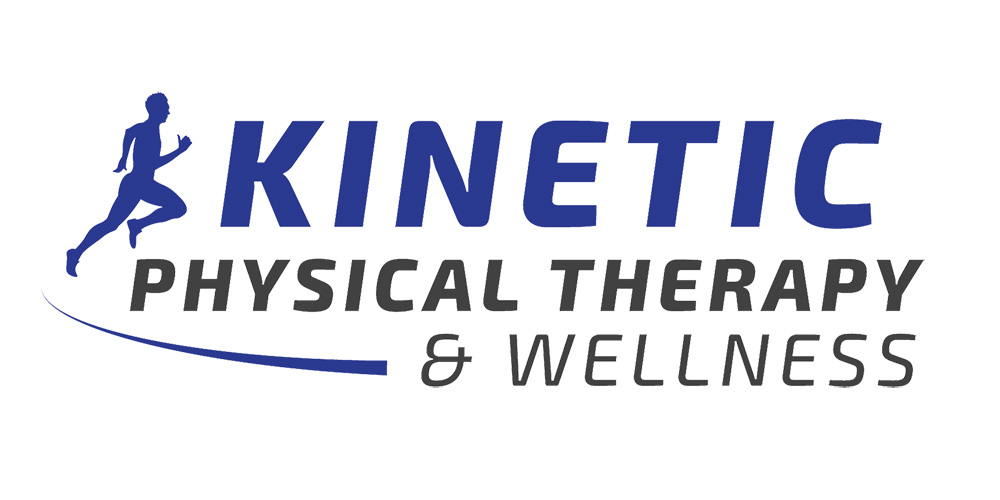Aquatic Therapy
Benefits of Aquatic Therapy
Aquatic therapy in our heated salt water pool can enhance your rehab. Aquatic therapy is the scientific practice of physical therapy in an aquatic/water environment by physical therapists and physical therapists assistants. Aquatic Physical Therapy includes but is not limited to treatment, rehabilitation, prevention, health, wellness and fitness of client populations in an aquatic environment. The unique properties of the water enhance treatments for clients across the age span with musculoskeletal, neuromuscular, cardiovascular/pulmonary, and integumentary (skin) diseases, disorders, or conditions.
Pain reduction is critical for clients who suffer daily. Kinetic Physical Therapy and Wellness strives to help clients achieve their health goals and improve their quality of life through innovative therapy.
Underwater exercise can increase flexibility and range of motion, provide better sleep, and can reduce joint or muscle pain.
Resistance jets allow therapists to calibrate resistance to suit the needs of the client, encouraging recovery by customization.
Floated running and walking allows clients to maintain physical conditioning and ability while they are waiting to return to full weight bearing.
Massage hoses assists in the reduction of muscle and joint specific soreness.
By maintaining warmer water temperatures (92 degrees Fahrenheit), the muscles of the body can relax, providing both therapeutic and rehabilitative benefits.
Aquatic Therapy Frequently Asked Questions
Upon arrival at our office, you will meet your physical therapist. You will be asked to fill out some basic paperwork (and any paperwork that you might have about your injury).
The physical therapist will then ask you a series of questions about your past and present medical conditions before performing a comprehensive evaluation of your muscles, joints, nerves, tendons, and ligaments, including range of motion, strength and functional testing. Based on your clinical exam, and your personal goals, a customized treatment plan will be established for you. The majority of patients will receive treatment on the first visit. Future appointments will also be scheduled.
Aquatic Physical Therapy is the evidence-based and skilled practice of physical therapy in an aquatic (water) environment by a physical therapist (PT) or physical therapist assistant (PTA) who is under the supervision of the therapist. Aquatic Physical Therapy includes but is not limited to treatment, rehabilitation, prevention, health, wellness and fitness of the patient in an aquatic environment with or without the use of assistive, adaptive, orthotic, protective, or supportive devices and equipment.
Aquatic Physical Therapy interventions are designed to improve or maintain:
Function, aerobic capacity/endurance conditioning, balance, coordination and agility, body mechanics and postural control, flexibility, gait and locomotion, relaxation, and muscle strength, power, and endurance
The difference is that aquatic physical therapy requires the “skilled service” of a PT and/or PTA which may include:
- the clinical reasoning and decision making skills of a PT/PTA;
- the patient has impairments and/or disabilities which can be minimized or eliminated with aquatic physical therapy; and
- the patient has potential to improve on their functional goals/outcomes to improve quality of life and ease burden of care.
- the implementation of such therapy must comply with all standards of care which impact all other treatment services.
Aquatic Exercise which we offer through our wellness services, is the utilization of water for the implementation of quality of life, fitness-related or general health-related goals; It can be delivered in a group setting that includes multiple clients and diagnoses; can be delivered by an individual other than a licensed physical therapist or physical therapy assistant; and usually has little or no accompanying paperwork, insurance involvement or written follow-up information required.
Aquatic Physical Therapy is the evidence-based and skilled practice of physical therapy in an aquatic (water) environment by a physical therapist (PT) or physical therapist assistant (PTA) who is under the supervision of the therapist. Aquatic Physical Therapy includes but is not limited to treatment, rehabilitation, prevention, health, wellness and fitness of the patient in an aquatic environment with or without the use of assistive, adaptive, orthotic, protective, or supportive devices and equipment.
Aquatic Physical Therapy interventions are designed to improve or maintain:
Function, aerobic capacity/endurance conditioning, balance, coordination and agility, body mechanics and postural control, flexibility, gait and locomotion, relaxation, and muscle strength, power, and endurance
Aquatic Therapy takes place in a pain-free, stress-free, warm and relaxing atmosphere, one-on-one with the therapist.
The buoyancy (what makes you float) provided by the water assists in supporting the weight of the patient. This decreases the amount of weight bearing, which reduces the force of stress placed on the joints. By decreasing the amount of joint stress, it is easier and less painful to move.
The warmth of the water during Aquatic Therapy assists in relaxing muscles and increasing blood flow to injured areas. This environment also allows the patient the ability to move with less pain in ways that they are unable to move on land.
Patients with muscle spasms, back pain, and fibromyalgia find this aspect of Aquatic Therapy especially therapeutic. Individuals who have arthritis, Multiple Sclerosis, chronic Pain, nerve related injuries, balance problems and many more will benefit from aquatic therapy.
Each session is approximately 45-60 minutes in the pool
No. We do a comprehensive evaluation and determine your customized plan of treatment amd then we will orient you to the aquatic area so that you are all ready to begin treatment in the pool at your next visit.
On your first day wear comfortable clothing that allows access to the injured area to be evaluated. For example, if you’re coming to us for a hip or knee injury, it’s best to wear shorts or bring them with you. When you return to get into the pool you may wear a swim suit or tshirt and shorts
Only the licensed physical therapists and physical therapist assistants will work with you during therapy.
Only the licensed physical therapists and physical therapist assistants will work with you during therapy.
All of our therapists are Doctors of Physical Therapy and have also had experience and training in aquatic therapy. Kinetic is also a member of the Aquatics Section of the American Physical Therapy Association.
Yes the pool is a heated salt water pool. The temperature is set between 89-92 degrees (much like getting into your tub at home).
A salt solution is added to the water and the sodium is filtered from the water so that the chloride (which is what keeps the water clean) remains. This is much like a traditional pool but without as much chlorine. Salt water pools are easier on the skin as well.
Each person’s plan is made to suit their individual needs, but our therapists will get in the pool with each patient unless it is to the patient’s advantage that the therapist give guidance from outside of the pool.
We are in network with all of the major health insurance companies. Each person’s plan with their insurance company can vary but aquatic therapy is covered under and is a part of physical therapy services. The co-pay or deductible that you would normally have would be the same as any other physical therapy visit. We will be happy to help you find out about the specifics of your physical therapy coverage
You do not have to be a “swimmer.” Just be able to relax in the water. Most people who are a little fearful of the water do very well after a few visits but if someone has an extreme fear of the water we recommend land based physical therapy.
No referral is needed but we will still collaborate with your physician to make sure you receive the best care.
We have locker rooms, restrooms, and a lift for the pool to help patients who might need it to get into the pool.
Aquatic Therapy Reviews
“My post-surgery arthritic foot limits my choice of exercise options. I have been taking the aquatics exercise classes for a few months, and they are giving me the cardio, strength, and toning that I could not get before due to physical limitations. Kiara is exceptional in knowing exactly how hard to push me while still allowing me to enjoy the high of exercising again. A great workout that will get me 100% more mobile in no time. Highly recommend Kinetics.“
~Holly W.

“The doctors and staff are exceptional. In addition to regular strengthening, I was able to have aquatic therapy which I found very helpful. Dr. LaTanis Dickens took her time to determine what I needed for my rheumatoid arthritis and worked on those areas at each session. I highly recommend this business.“
~Mildred S.

“Kinetic offers a wide array of services including physical therapy, sports physical therapy, occupational therapy, speech therapy, vital stim, urinary incontinence therapy, indoor aquatics, massage therapy, Zumba, group land and water classes. Functional capacity evaluations are provided by Occupro certified licensed therapists. Are you an athlete that needs motion analysis? Kinetic offers the latest technology. Medicare, Tricare, pediatric Medicaid, workers comp, and most insurances are accepted. Referrals are not required in most cases. Payment options are available through Care Credit.“
~David E.









